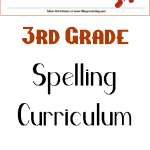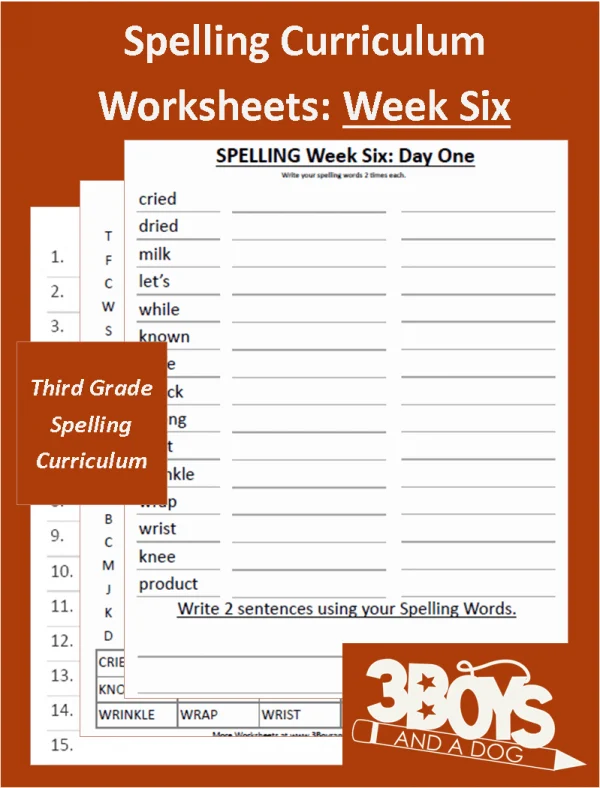This list of 15 Third Grade Spelling Curriculum: Week Six words will help your children improve their spelling accuracy and can even expand their vocabulary! With silent letters and apostrophes, this week’s spelling list could be a bit tricky! Be sure to work in practice this week to help your child master these 15 spelling words!
Third Grade Spelling Curriculum: Week 6 Word List
- cried
- dried
- milk
- let’s
- while
- known
- knife
- knock
- wrong
- knot
- wrinkle
- wrap
- wrist
- knee
- product
More Spelling Resources:
- Complete weekly list here
- FREE Year Round Blank Spelling Test Sheets For Both 10 or 15 Words
- Free spelling activity (for any list!)



Carla
Thursday 19th of November 2015
How did you come up with the lists? Do you have a rule that you learn each week and the lists go along with the rule? That is what I am looking for and I can not believe how difficult it is to find something like that. I want my daughter to understand the rule and see all the words that follow it so the connection is made. I know i do not know all the rules also . Thanks